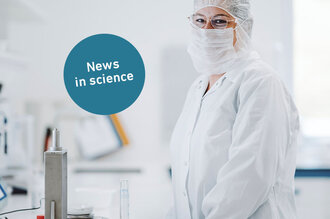Our body is a true miracle into which nature has put a lot of effort. Millions of years of evolution have created a highly complex organism with perfectly coordinated metabolic processes. One of these sophisticated control systems is the acid-base balance, which continuously regulates ions in the body.
Why is the acid base balance important?
The acid-base balance is essential for the smooth operation of the body’s metabolic functions.
The buffer systems balance the acid-base balance in the body
Because both acidic and basic substances are produced through nutrition and metabolism, the body’s various buffer systems are constantly neutralising excess acids and bases in order to maintain the ideal acid-base balance. The human body is also able to metabolise acids and excrete them via the lungs and kidneys.
The pH value of blood
We often hear about the ideal pH value (7.36 to 7.44), which is especially important in the blood. The blood pH value is thus in the slightly basic range.
Influence of diet on the acid-base balance
Acidic or alkaline – not a matter of taste
There are many lists of “acidic” and “basic” foods. However, not all of these can be trusted. Some are based on old, outdated knowledge. For example, the pH value of a particular food does not say anything about how it is ultimately metabolised in the body (i.e. whether it produces acidic or basic degradation products). The acid-base balance also has nothing to do with our sense of taste because sour-tasting foods are not necessarily acid-forming. For example, citrus fruits are considered base formers, while white bread, which is slightly sweet, is an acid former.
If you are looking to find your way in the acid-base jungle, you can use the PRAL (potential renal acid load) to better understand the food tables. The PRAL provide information about the renal acid excretion after consuming 100g of the a food.*** The higher the PRAL value, the higher the acid load. For example, meat, fish, cheese, and eggs have high positive values and thus shift the acid-base balance into the acidic range. Conversely, negative values indicate base formers. The “basic” foods primarily include various fruits and vegetables that supply the body with minerals.
What's acidic, what's alkaline – the basic food groups in numbers
Acidic, alkaline – how to keep track? If you feel overwhelmed by pages of lists and tables and are just looking for a rough guide to help you find your way through the acid-base jungle, check out the following table. It shows the average PRAL values of all the most important food groups at a glance.
Food group | PRAL per 100 g of edible portion |
Plant-based foods |
|
Fruits and fruit juices | -3,1 |
Vegetables | -2,8 |
Herbs (e.g. basil, parsley, chives) | -8,2 |
Beverages | |
Alkali-rich + low phosphorus (e.g. wine, coffee) | -1,7 |
low alkali + low phosphorus (some beers, low-mineral water) | 0 |
Herbal teas | -0,2 |
Coca Cola | 0,4 |
Fats and oils | 0 |
Cereal products | |
Bread | 3,5 |
Flour | 7,0 |
Pasta | 6,7 |
Animal source foods | |
Fish | 7,9 |
Meat and meat products | 9,5 |
Low protein cheese (<15 g protein) | 8,0 |
High protein cheese (>15 g protein) | 23,6 |
Chicken eggs | 8,2 |
Milk | 0,9 |
Whey-based dairy products (e.g. yogurt) | 1,3 |
Negatives Vorzeichen ( 0) → basischer Effekt
Positives Vorzeichen (> 0) → säuernder Effekt
Tabelle modifiziert nach Remer, T., Manz, F. 1995. Potential renal acid load of foods and its influence on urine pH. J Am Diet Assoc. 95(7):791–7.
Warning: Acid formation! How daily life affects our acid-base balance
In addition to our diet, our lifestyle can also play a leading role in the acid-base drama. True to their bad-boy image, the stimulants that place the greatest burden on our health strike a sour note here as well. For example, smoking not only burdens our lungs, it can also restrict our ability to exhale acidic carbon dioxide. Or alcohol, which is metabolized into acids in the body, which then consume alkaline minerals during further decomposition. Its dehydrating effects reduce the excretion of toxins, leaving a sour taste in our mouth – and in our acid-base balance.
If you think that only external influences have an acidic effect on our buffer systems, think again! Stress, hurry, strain – the heaviness we feel in these situations is also reflected in hormonal changes: stressed people breathe faster and more shallowly. This means that less oxygen enters the bloodstream to remove acidic waste products. Furthermore, the breakdown of stress hormones itself produces acid.
Acidifying factors at a glance
- Acid-forming foods – especially in large quantities
- Low fluid intake
- Diet
- Lack of physical exercise
- Stress and other forms of physical and mental strain
- Smoking
- Alcohol
Food & dietary supplements with which you can nurture the acid-base balance
After feasting, base-forming and antioxidant-rich foods such as vegetables, fruit, herbs, and algae are good for the body. Special dietary supplements (e.g. base powders) can provide the body with an extra portion of minerals. The trace element zinc is particular important in this context because it contributes to a normal acid-base metabolism. In addition, animal protein, sugar, white flour, high-fat foods, and ready-made products should also be reduced.
Alkaline powders: how helpful are they?
If life gives you lemons (an unhealthy diet, stress, insomnia, etc.), make an alkaline lemonade cocktail. The basic recipe for our daily alkaline cocktail is a diet of around 80% alkaline-forming foods, balanced against around 20% acid-forming foods. We can provide our body with additional support in the form of alkaline preparations (alkaline powders, alkaline capsules) with an extra dose of alkaline mineral compounds (e.g. calcium carbonate, sodium bicarbonate, magnesium carbonate).
What do you need to know about them?
To avoid interfering with the digestive process, which depends on pH, these products should never be taken with food; it is better to take them one hour before or at least three hours after a meal.
Exercise-induced muscle acidification? A thorny topic
Is exercise good for our acid-base balance? Some sources say yes, others no. The result is a great deal of uncertainty. While it is true that more positive ions (especially acidic H+ ions) are produced in the muscles during exercise due to an increase in energy metabolism, the lungs generally exhale these ions as carbon dioxide. Moderate physical exercise even has a beneficial effect on our acid-base balance, as it boosts the body's metabolism and acid excretion processes. Acidification of the muscles may occur briefly during intensive endurance training. As soon as the exertion is over, however, our buffer system balances out the excess acid. There is thus generally no need for athletes to worry about chronic high acidity, which is also known as acidosis.
Determining the acid-base balance: How to test the pH levels
Can you measure your acid-base balance using a standard urine pH test from the pharmacy?
Unfortunately, it's not as simple as that. Our pH value fluctuates throughout the day and a single pH value measurement is just a snapshot – it cannot be used to draw any further conclusions. There are more elaborate methods, e.g. the Sander method or measuring net acid excretion in urine collected over 24 hours, which yield more conclusive results, but these tests are only offered by certain specialized laboratories.
Sander method
Watch out, this is where it gets complicated – and chemical! The Sander method involves collecting five urine samples throughout the day and measuring their pH values and acidic and alkaline components. These values are used to calculate the mean acid quotient, which is a figure that reflects the urinary buffering capacity and the body's acid load. As long as this value does not deviate from the normal range in either direction – alkaline or acidic – by more than 10%, everything is fine. Higher deviations mean that you may need to keep a closer eye on your acid-base balance. The mean acid quotient rarely moves far into the alkaline range, but it does frequently shift in the opposite direction, becoming more acidic. This indicates that you may need to make some fundamental changes to your diet and lifestyle.
Determining acidity in 24-hour urine collection
This method involves collecting all the subject's urine over 24 hours, analyzing the relevant excretion products, and using this data to determine the daily renal net acid excretion. Urinary pH values above 6.0 indicate good reserve functional capacity, whereas urinary pH values below 5.4 indicate maximum acid stimulation.

Does our acid-base balance affect our bones?
Does acid-base balance impact bone health or doesn’t it? Experts have been debating this question for years now. The subject has generated an entire array of conflicting studies which lend credence to either camp in turn and continue to fuel the debate. Dr. Lynda Frassetto and her team have now launched a research project to reconcile the opinions of both camps.
Don’t be a sourpuss! Especially when it comes to your acid-base balance. This sophisticated regulatory system constantly strives for perfection. Our body relies on sophisticated buffer systems to achieve this constant balancing act and thus maintain the ideal acid-base equilibrium. Which is fortunate. Without them, our typical western diet with its high proportion of animal products and cereals versus a lower proportion of fruits, vegetables and herbs would lead to an accumulation of acid in our bodies. Despite their effectiveness, however, even our powerful buffer systems have their limits and, as we know from studies, this can force our body to draw on the alkaline calcium compounds in our bones.
Can too much acid attack our bones? Study reveals kidney-bone axis.
This background knowledge now raises the understandable question of whether decades of eating high-acid foods might be eating away at our bones. Dr. Frassetto and her team addressed this question and resolved to get to the bottom of the mass of frequently conflicting studies. In the course of their research, the scientists took a closer look at the kidneys – two key players in acid-base balance, which arguably also play a prominent role in the impact of acid load on bone. While younger people with strong kidney function are better able to maintain their blood pH at the normal range of 7.36 to 7.44, older people with poor kidney function can only maintain their blood pH at the lower end of the normal range, which in turn can have an adverse effect on kidney performance – a vicious circle. But to return to the original question: The researchers state that as long as our kidneys are functioning normally, our typically acid-heavy diet doesn’t seem to be a problem for most people’s bones. This is not the case for people with even minimal, barely detectable kidney dysfunction (insufficient excretion of only 1 or 2 mg of acid per day). Decades of acid-heavy diets may be eating away at their bones. For this reason, elderly people and people with impaired kidney function should take care to eat an alkaline-rich diet to provide targeted support to their kidney-bone axis.
Source:
Frassetto, L. et al. 2018. Acid Balance, Dietary Acid Load, and Bone Effects – A Controversial Subject. Nutrients. 10(4):517.
Further tips for a good balance in the New Year
Start the day liberated with oil pulling
Oil pulling has a long tradition in Ayurvedic teaching. In addition to supporting oral hygiene, it is primarily intended to stimulate the cleansing of the body. Try it out and awaken a new feeling in your mouth.
It’s important to drink the right fluids.
Tap water supplies valuable minerals and facilitates the excretion of metabolic waste products via the kidneys. Unsweetened herbal teas or diluted vegetable juices can also be used.
Just relax.
Anger, time pressure, and stress not only burden the soul but also place a greater demand on the acid-base balance. Activities such as yoga, mediation, and various breathing and relaxation exercises (e.g. progressive muscle relaxation, autogenous training) as well as laughter not only have a relaxing effect on the soul but also reduce physical “acid stress”.
Get a jump start in the New Year.
The entire body benefits from moderate exercise such as Nordic walking or ice skating. Exercise stimulates your metabolism and the body's acid elimination processes. It relieves stress and facilitates carbon dioxide exhalation by making you take deeper breaths.












